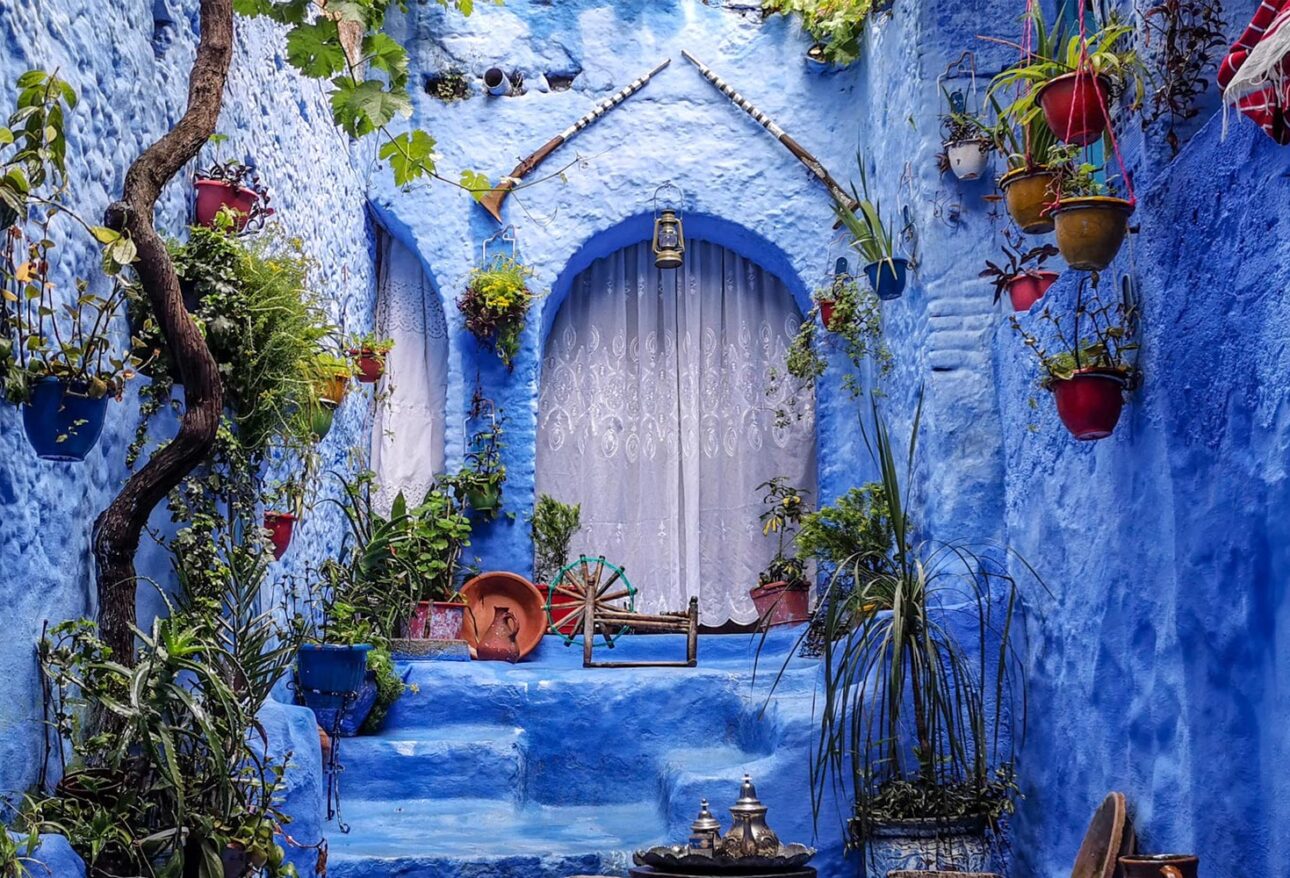Chefchaouen is famed as the Blue Pearl of Morocco for its dreamlike blue and white Maisons and avenues. The blue color of the medina (a special kind of city in areas nearby) has been a mystery people talking about for years. It is the enigma that gives Chefchaouen its glamour like a region of sky kingdom, making it a fixed admired tourist destination. But it is not all this medina offers. This medina represents different categories of enjoyable attractions for various tastes in globe-trotting. As opposed to the Arabic and French languages being more common in the rest of the country, some information about Spanish may bring you a deeper experience of your travel to Chefchaouen.
Why So Blue?
White-washed structures of Spanish and Moorish architecture are not rare in this area. The shades of blue are the reason for the uniqueness of this medina. People tried different ways to solve the mystery of striking blue walls. As the color blue represents the sky according to Jewish belief, Jewish communities use this color frequently for painting things like fabrics, utensils, and walls!
Not only jews paint their walls blue, and other residents enumerate cooling the residence and repelling mosquitoes as the reasons for painting their houses blue. There are also some whom the blue color of the walls reminds them of the deep blue of the Mediterranean Sea or the Ras el-Maa Waterfall, where the locals get their drinking water from. The aesthetical reason for this phenomenon should not be underestimated. As it is a unique property for this medina, it helps prosperity of tourism here. Anyways, wandering in the dreamy blue avenues of this medina is an extraordinary experience. If you are a cat person, you can enjoy spotting spoiled cats in the streets.
Chefchaouen for History Enthusiasts
The medina of Chefchaouen was structured under the region of Moulay Ali Ben Moussa in 1471. First, it was a small fortress to resist the Portuguese invasions of Morocco. After the Spanish Reconquista in 1492, the Ghomara tribes, Moriscos, and Jews dwelled here. After Spain seizing the old medina in 1920, it was under the flag of Spanish Morocco. Chechaouen rejoined Morocco when it declared its independence in 1956.
The Spanish Mosque
The Spanish Mosque is an astonishing building sitting alone on a hill above Chefchaouen. This holy place was constructed in the 1920s, during the war, but never actually utilized. It now sits isolated, gazing toward the medina. An easy 45-minute hike to the top is honored with amazing perspectives. Remember that because this mosque is an abandoned one, non-Muslims can enter, while the other mosques around may not be the same.
The Kasbah Museum
In the piazza stands the Kasbah, an old Moroccan fort. This structure has served many aims through the decades, most notably a prison, and today it is an anthropological museum and art gallery. There are also astonishing Spanish-style gardens providing a nice calm escape from the medina. You can learn about the meandrous history of the area by observing the ancient artifacts, clothing, instruments, and traditional decorations and crafts on display. If you climb the fort tower, you will discover beautiful views over the medina.
Jama’a Kabir Hammam
After exploring the beauties and mysteries of the medina, your soul and body may desire recalibration. An ancient ritual remaining through ages in Moroccan life like tagine and mint tea is taking a bath in a hammam (public bath). This experience offers a respite for getting clean and rejuvenated while representing you with a deeper understanding of the history and culture here. Hammams are believed to have roots in the Roman era, taking a spiritual aspect with the spread of Islam. The value of a purified body for having prayers and devoting time to quiet reflection, in addition to the lack of hot water in private households, helped hammams flourish. Jama’a Kabir hammam near a mosque with the same name in the medina’s main square is a good choice for having this experience.
You can enjoy the rhythm of bathing with a little change from the old times, beginning in a dry, heated zone for relaxation and opening pores and then entering a steam room. Bather applies black olive-oil soap, known as Savon Beldi, for an intense body scrub with a Kessa Loofah. Then they rinse and scrub you until a layer of skin, dirt, and stress is shed.
As this hammam is a communal one, it can be confusing or awkward for the uninitiated. But you don’t need to worry. Just follow the attendant’s lead and go with the flow. Ask what to bring before going to Hammam. You may need plastic sandals, towels, a shower scrub, and also a sense of humor and curiosity! Participating in this ancient communal tradition reveals aspects of the culture and a glow on your skin you could not imagine before.
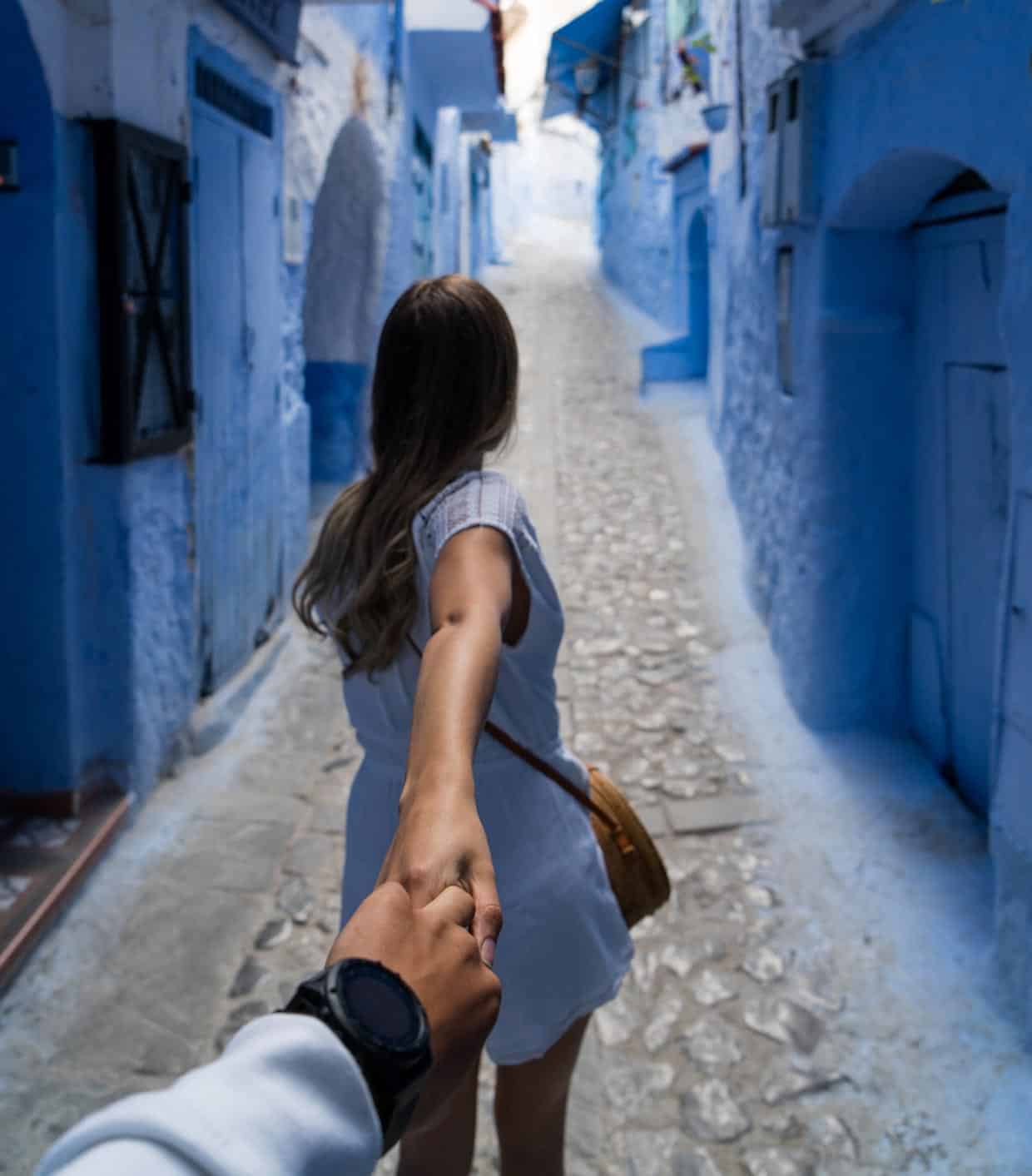
The Adventurous Chefchaouen
Hidden in Africa’s northern mountain range, the Rif Mountains, Chefchaouen has plenty to furnish to those looking for adventure. Valleys, gorges, and charming peaks are in bounty where dry landscapes meet crawling mountain streams. There are some routes passing near the village of Jebel El Kelaa, at the north side of the medina, through Afeska, where you can reach the Mediterranean Sea’s astonishing views by passing through lush green forests.
Ras El Maa Waterfall
Although Ras El Mata is a small waterfall, it is very amusing, situated in the medina’s outlying districts, amongst the ravishing forest. Relax to have a warm cup of mint tea here, swaying your feet in the newly melt mountain ice while observing locals doing their routines in the riverside. This waterfall is close to the Spanish mosque we talked about earlier in this text, so you can plan to visit both after one another.
Jeb Al Kalaa
This mountain overlooking the medina looks like the poliad god of Chefchaouen. It takes about 6-8 hours of hiking to climb this mountain. The trail may be challenging to follow, but you can be confident in your navigation. You can also book a local guide to lead you. Once you get to the top, there are exceptional panoramic perspectives over other peaks and mountains and the blue medina below. If you have a day to spare, we recommend you not miss the chance to hike this mountain.
Talassemtane National Park
About an hour of drive from Chefchaouen takes you to this breathtaking national park, full of wonderful plants and animals you only have the chance to meet here! Enjoy the companionship of a guide to escort you on a memorable hike among the trees and peaks. Spending time in this national park may amuse your children.
Akchour
After spending time in the Talassemtane National Park, you can head on to the area of Akchour to enjoy its incredible emerald pools, tall waterfalls, and canyons. You can start your adventure by visiting the Akchour waterfalls and the Bridge of God, a mind-blowing natural stone arch. You can visit these natural attractions by steep hiking. Don’t forget to wear proper shoes!
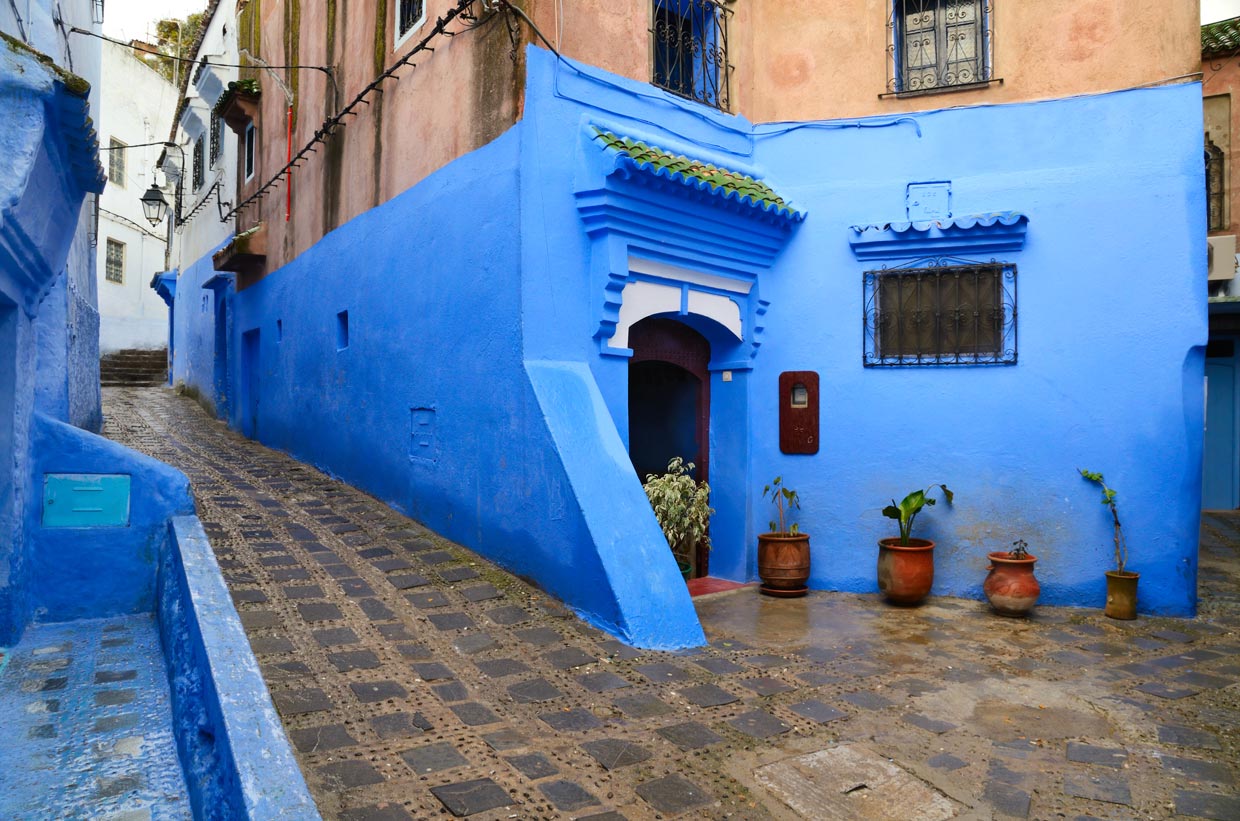
Gastronomy in Chefchaouen
Your taste buds will enjoy the unique taste of hundreds of different spices and a variety of textures, while the smell of aromatic herbs and other tantalizing smells will infuriate you. If you are a foodie, consider bakeries as well as restaurants and cafes to explore. As the bread is baked in the traditional wood-fired ovens in these bakeries, it has a particular taste and crunchy outer layer.
For lunch and dinner, try the medina’s signature tagline: a Moroccan-style dish including fish, vegetables, spices, and oil set out on a bed of fleecy couscous. This mouthwatering dish can also include Ras El Hanout, a pungent blend of nearly 30 spices like turmeric, paprika, cardamom, chili, cumin, cinnamon, and more. Kefta (lamb meatballs) and tajines (slow-cooked stews in clay pots) are also popular local food.
You can try these tempting dishes at the famous Casa Hassan’s Tissemlal Restaurant, a guest house, and a restaurant. Interestingly, its open-plan kitchen provides a sneak peek into the preparation of the different dishes ordered. Chez Aladdin may also interest you with its terrace representing astonishing rooftop landscapes over the city. Restaurant Populaire Bab Ssour is also among the recommended restaurants. You can enjoy local food for breakfast in the main square. Lala Mesouda, being popular for homemade Moroccan cuisine, serves exquisitely dished-up tagines and spicy couscous. Some of their most delicious dishes include local recipes like Baqula (a salad made of cooked greens and special sauces), Chardon (artichoke thistle fried in olive oil), and Safarjal (a blend of quince and beef).
If you are interested in drinks, you should try orange juice or mint tea after having your meals. A glass of freshly squeezed oranges is a good choice if you feel hot, while a refreshing mint tea, made by boiling green tea leaves in addition to fresh mint sweetened with sugar, can be a proper choice for cooler temperatures. As well as being great for health, it is an important part of Moroccan traditional life routine, as many locals find drinking this tea a good opportunity to gather and chit chat.
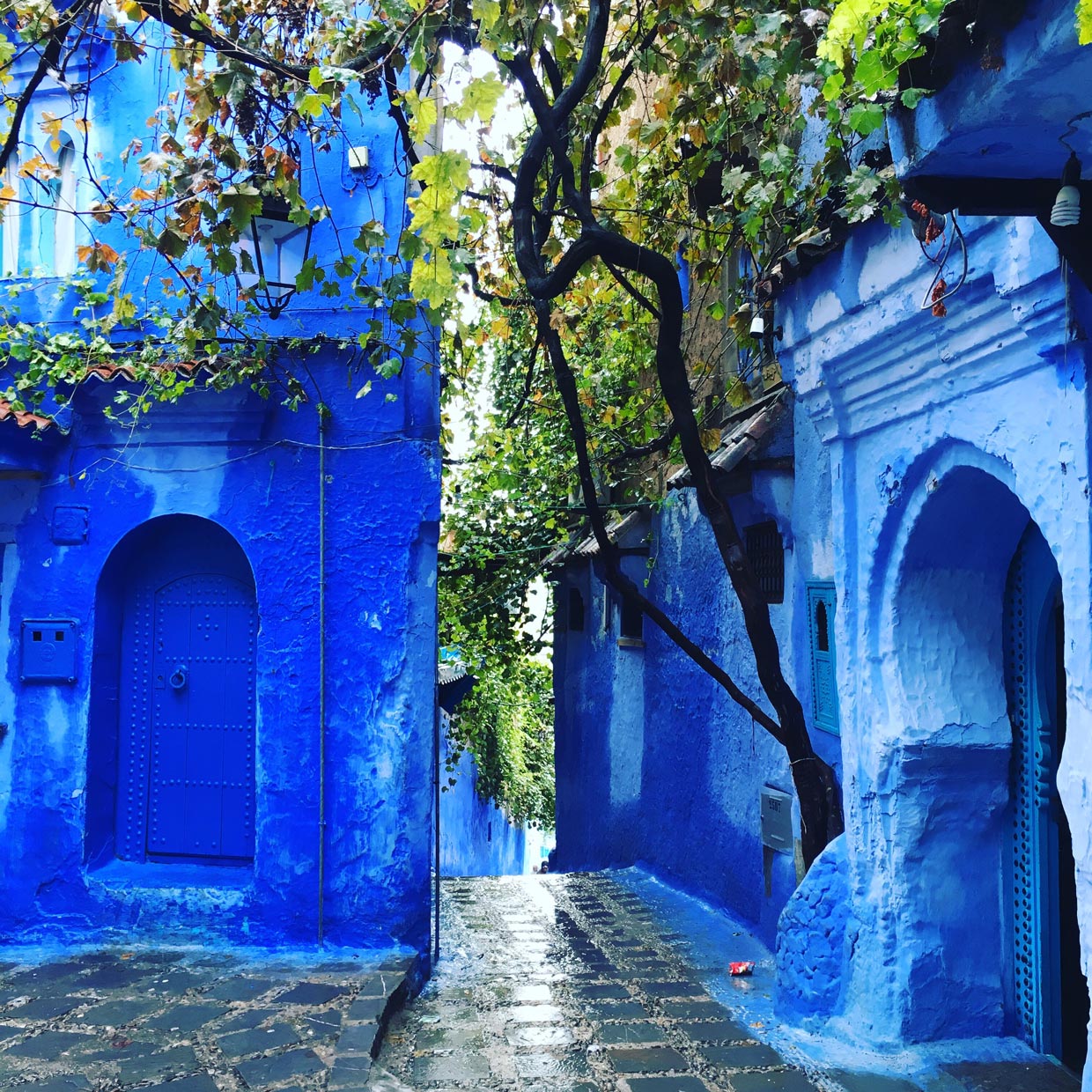
Fulfilling Shopaholic Desires
Quaint and eye-catching, Chefchaouen medina is like entering another world. Settled in the crooked hillside avenues, the medina is a compelling boutique for those seeking to burn a hole in their pocket during a sacred eastern ritual. Brass teapots and plates catching the smallest light from the deep mysterious shadows to catch your eyes. Handwoven blankets and shawls veil walls and tables with their bright colors. Aztec-patterned sacks and Moroccan slippers are sold in hit-and-miss residences, streaming from sacks into the avenues.
Remember to stop at the covered trove along with Hassan 1 if you are fascinated by silver plates and jewelry. Hassan 1 ornaments balance in insecure stacks and line the walls. If you continue your way to the cobbled path, you come across local stores selling cardigans, shawls, and blankets crafted from sheep’s wool or camel hair. Down the hillside, to the Kasbah, you come across a scattering of handmade and precious tagine clay pots designed with elegant artistry and accumulated for the taking.
Before getting too carried away by the glitter of gems and jewels, the warm texture of carpets, and the aroma of spices, it’s best to learn the art of bargaining. In Morocco, it is accepted to negotiate the prices. Ask the seller’s offer before making yours. Then offer half the price of the seller quickly, gently raising the price to the amount you both find acceptable.
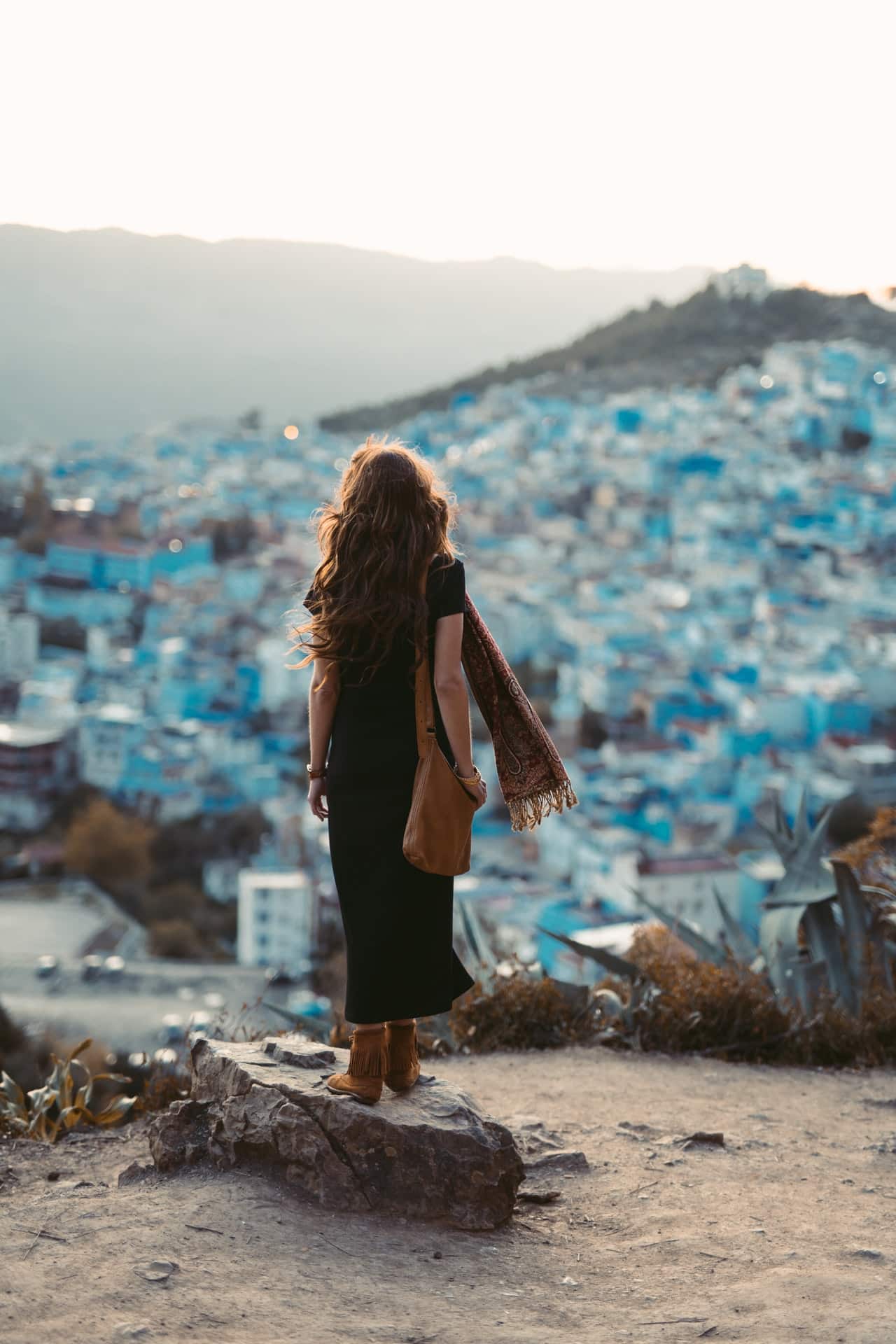
Getting to Chefchaouen and Getting Around
As we said before, going to Chefchaouen is like entering a different world, so it is not easy to get to this remote location among mountains and peaks, but it is well worth traveling! You can reach the medina by taxi or local bus from Tangier and Tetouan. It’s not possible to fly or take the train to Chefchaouen. Still, if you are starting your journey from Marrakech, you can book a flight to both Tangier and Tetouan or take the night train from Marrakech to Tangier, continuing to Chefchaouen by bus or taxi.
Once in Chefchaouen, the medina is walkable, and you can wander around on foot. You can also visit many nature spots via hiking on one of the many trails leading out of the city. Of course, in Morocco, you always have the option to rent a car to travel to different Medinas and explore them.
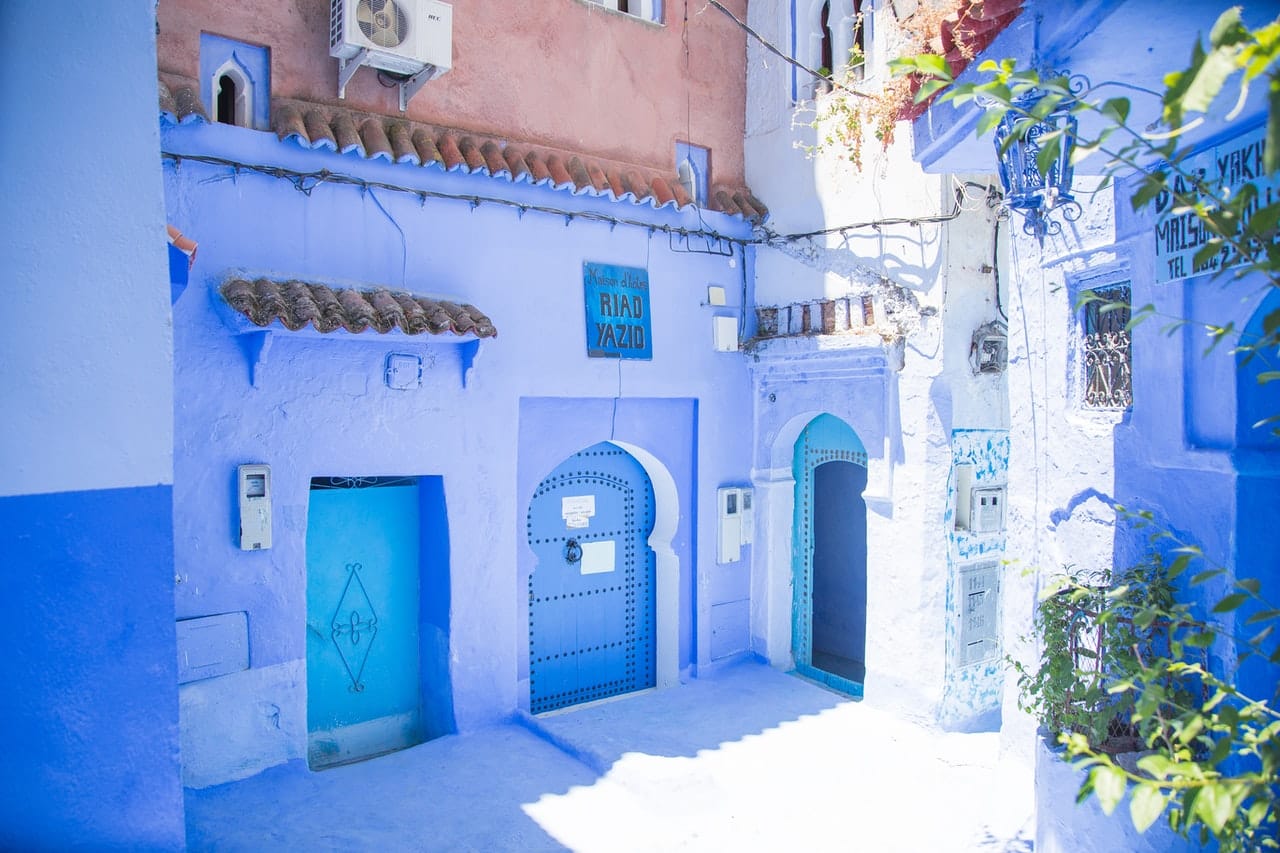
Where to Stay
Chefchaouen has a great variety of accommodation offers. Stay in a traditional Ryad for the most genuine life experience here, especially watching the sunrise, sunset, and quiet starry night of Chefchaouen on the rooftop. Ryads and hotels mostly vary from budget to high-level luxury. Luxurious ryads offer you warm spas to relax. Altogether staying inside the medina itself can be a bit costly; however, there are also some hostel options if you prefer a backpacker style residence.
With a perfect access point inside the medina, the fancy Lina Ryad and Spa has capacious rooms and patios with the mountains’ views. The ryad is perfectly designed with arches, fireplaces, and Moroccan textiles. Casa Hassan as we mentioned before, is both a guest house and a restaurant. You don’t need to worry about your food if you choose to stay there. Casa Perleta and Ryad Assilah Chaouen are also among the top-rated ryads in the medina. Ryads usually offer you a traditional Moroccan breakfast of fresh bread, homemade jams, and fresh fruit on their rooftop patios.

When to Go
You may schedule your excursion during spring (from March to May) when the wildflowers flourish alongside the roads to the medina. The months from September to November considered to be the fall season are also a good choice according to climate. But if you prefer warmer weather, the fairly mild climate, compared to the rest of Morocco in the summer, may interest you. In summer, people from hotter parts of Morocco go on a vacation in this area because of the enjoyable temperatures.

